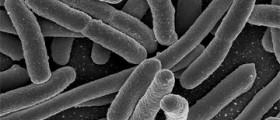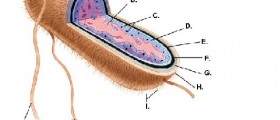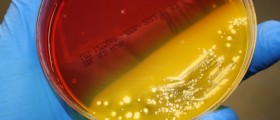
Foodborne diseases are those diseases that are contracted through the consumption of food or beverages contaminated with pathogens like viruses, bacteria, fungi and parasites. They are particularly common in the countries with poor sanitation standards and in developing countries.
What are the most common foodborne diseases?
Among all diseases that can be transmitted through contaminated food, the most common are those caused by campylobacter, salmonella and E. coli, which are all bacteria. Viral diseases caused by a group of viruses called calicivirus are also very common.
Campylobacter is a bacterium that causes gastrointestinal disturbances, such as abdominal pain and diarrhea, and it also causes fever. Campylobacter is the most common culprit among all the diarrheal diseases in the world.
Salmonella is also a very common bacterial foodborne disease. It causes salmonellosis, a disease characterized by diarrhea, cramps and fever. In people who have weaker immune system it can spread through the blood and cause very serious and potentially life-threatening infections.
E. coli, especially the type called E. coli O157:H7, is a bacterial disease associated with cattle. In humans, it causes severe diarrhea, often with blood in it, very intense stomach pain but little or no fever. In rare cases it can lead to a complication called hemolytic uremic syndrome.
Calicivirus, or Norwalk-like virus, is the most common viral foodborne disease. It can be difficult to diagnose because not many facilities have the required laboratory tests. It causes nausea and vomiting, rarely diarrhea, and usually resolves within two days.
It is estimated that each year in the United States 47.8 million people suffer from a foodborne disease. The number of registered cases in the United Kingdom is two million and in France 750.000 cases. In the United States, the disease that affected the most people is calicivirus, followed by salmonella, clostridium perfringens and campylobacter.
The foodborne disease with the highest death rate in the United States is salmonella, followed by toxoplasma gondii, listeria and norovirus.
Sources of foodborne illness
Many pathogens in comtaminated food can be killed by cooking or even refrigerating. For some of them, a very high or very low temperature is required. One of the most common sources of foodborne illnesses is raw meat and poultry. Undercooked meat is also a common source. Diseases transmitted through raw or undercooked meat and poultry include campylobacter, E. coli, salmonella and L. monocytogenes.
Other raw foods can also be the source of a foodborne disease. Unpasteurized milk and dairy products obtained from unpasteurized milk, especially soft cheeses, are particularly dangerous. These foods can be the source of salmonella, shigella, staphylococcus aureus, L. monocytogenes and C. jejuni.
Raw and undercooked eggs are associated with salmonella. Not many people actually eat whole raw eggs, but they are used in many dishes and kitchen products, such as mayonnaise, ice cream, tiramisu, frosting and various salad dressings.
Botulism is a disease caused by C. botulinum and its main source is improperly canned foods and salted or smoked fish.
Shellfish, especially undercooked and raw, can be the source of serious diseases caused by bacteria called Vibrio vulnificus and Vibrio parahaemolyticus.
When it comes to fruit and vegetables, they too can be a source of a foodborne illness, especially if they are used fresh. Pathogens that can be transmitted that way include salmonella, shigella, E. coli, L. monocytogenes and various viruses and parasites.
Diagnosis and treatment of foodborne diseases
In ideal cases, the diagnosis of foodborne diseases should be made based on specific laboratory tests. In those tests, a sample of blood, urine or feces is collected and culture tests are then made. Stool samples are required if doctors suspect the disease is caused by salmonella, E. coli and campylobacter. Stool samples are also used for examination under the microscope if a parasitic infection is suspected.
As for the viruses, they are more difficult to diagnose, because they are smaller and harder to culture. Instead, the samples are tested for genetic markers that indicate the presence of a virus.
However, there are many foodborne diseases that cannot be easily identified in the laboratory, since they require either expensive or highly specific tests that are rarely available in standard medical facilities. In addition, many foodborne diseases go undiagnosed because the patients do not report them.
As for the treatment, it varies, mostly according to the specific pathogen and on the symptoms. For many diseases, the treatment is focused on the symptoms. For example, if the primary symptom is diarrhea, which is also the most common symptom of foodborne diseases, is treated through rehydration, either oral or intravenous. Simple diarrhea can also be treated with Bismuth subsalicylate preparations, which reduce the severity and the duration.
Many bacterial foodborne diseases require treatment with antibiotics, based on the culture tests. Antibiotics are not suitable for viral diseases, which mostly go away on their own in a couple of days.
Prevention is very important when it comes to foodborne diseases. Good hygiene habits, careful handling of all foods, refrigeration and freezing, proper cooking at adequate high temperatures of all meats and poultry and avoiding foods from suspicious sources are very important. Cross-contamination can be avoided by keeping all the surfaces and items in the kitchen clean and sterile.

















Your thoughts on this
Loading...